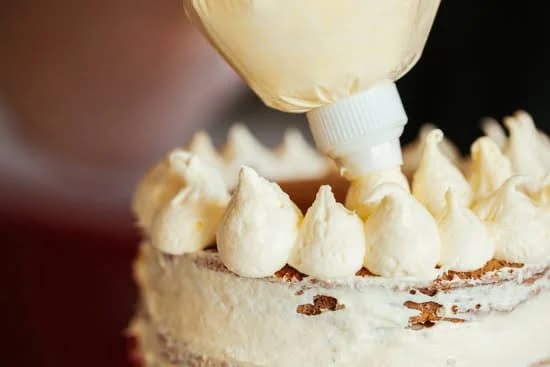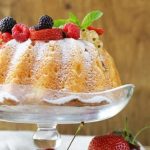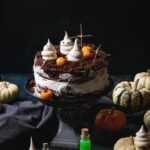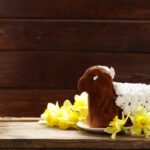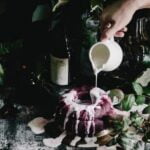Welcome to the world of DIY cake decor, where creativity and baking skills combine to create stunning and personalized cake designs. Gone are the days of limited options at the local bakery or settling for store-bought decorations. With DIY cake decor, you have the power to design cakes that reflect your unique style and make a lasting impression on any occasion.
DIY cake decor has revolutionized the baking industry, empowering enthusiasts and professionals alike to take their creations to new heights. It allows you to unleash your inner artist, transforming a simple cake into a masterpiece filled with intricate details and beautiful designs. Whether you’re a seasoned baker looking to enhance your skills or a beginner wanting to try your hand at something new, DIY cake decor is the perfect medium for unleashing your creativity.
In this article, we will explore the world of DIY cake decor in depth, starting with essential tools and equipment every baker needs. We’ll then delve into a step-by-step guide on how to create stunning decorations from scratch.
Along the way, we’ll share creative ideas, techniques used in DIY cake decor, expert tips and tricks, as well as inspiration for specific occasions. Be prepared to immerse yourself in a world of edible artistry as we guide you through this exciting journey of DIY cake decor.
Essential Tools for DIY Cake Decor
When it comes to DIY cake decor, having the right tools and equipment is key to creating stunning and professional-looking cake decorations. Whether you’re a beginner or an experienced baker, there are a few essential tools that every baker should have in their arsenal.
One must-have tool for DIY cake decor is a good quality piping bag. Piping bags are used to apply frosting, buttercream, and other decorative elements onto the cake. Look for piping bags that are durable, easy to clean, and come with different interchangeable tips for various designs.
Another essential tool is an offset spatula. An offset spatula is perfect for spreading frosting evenly on the cake’s surface and achieving smooth edges. It allows for more precision when working with delicate details and intricate designs.
In addition to piping bags and an offset spatula, having a turntable is incredibly helpful for DIY cake decor. A turntable allows you to easily rotate the cake as you work on different angles, ensuring even distribution of frosting or decorations. This tool provides better control and makes it easier to achieve professional-looking results.
Other essential tools include a bench scraper for achieving clean edges on your cakes, a decorating comb for adding texture or patterns to your frosting, and a set of quality food-safe brushes for applying edible paint or dusting with powdered sugar. By investing in these essential tools, you’ll be well-equipped to create stunning DIY cake decorations that will impress everyone who sees them.
Step-by-Step Guide on DIY Cake Decor
DIY cake decor allows bakers to express their creativity and personalize their cakes. Whether you’re a beginner or an experienced baker, having a step-by-step guide can make the process much easier. This section will provide a comprehensive breakdown of the process to DIY cake decor, from preparing the cake to adding intricate details.
The first step in DIY cake decor is to prepare the cake itself. Start by baking your desired flavor and size of cake layers. Once cooled, level the tops of each layer using a serrated knife or a cake leveler. This ensures that your layers are even and will stack easily.
Next, you’ll want to fill and stack your cake layers with your choice of filling. Spread a thin layer of frosting on top of each layer before adding the filling. Repeat this process for all the layers until you have a complete cake.
After assembling your cake, it’s time to crumb coat it with a thin layer of frosting. This helps seal in any loose crumbs and provides a smooth base for your decorative frosting. Use an offset spatula to apply the frosting in an even layer around the entire cake.
Once crumb coated, chill the cake in the refrigerator for at least 30 minutes to allow the frosting to set. This will make it easier to apply additional layers and decorative elements without disturbing the crumb coat.
Now comes the fun part – adding intricate details to your DIY cake decor. Using various piping tips, you can create borders, flowers, lettering, and other decorative elements with buttercream or royal icing. Practice on a separate surface before applying directly onto your cake to ensure precision.
For those who prefer working with fondant, roll it out on a clean surface using powdered sugar or cornstarch to prevent sticking. Carefully drape it over your chilled and crumb-coated cake, smoothing out any wrinkles or air bubbles as you go.
Once covered in fondant, you can add additional decorations such as fondant cutouts, edible pearls, or hand-painted designs using food coloring and a brush.
Creative Ideas for DIY Cake Decor
When it comes to DIY cake decor, the possibilities are endless. With a little creativity and some basic tools, you can transform a simple cake into a work of art that will impress your family and friends. Here are some creative ideas to inspire your next cake decorating adventure:
- Floral Delights: Flowers are a classic choice for cake decorations, but why not take it up a notch? Instead of using traditional flower molds, try making realistic edible flowers using gum paste or fondant. You can also experiment with different types of flowers and arrange them in unique ways on the cake.
- Whimsical Characters: Add a touch of fun and whimsy to your cakes by creating cute characters or animals out of fondant or modeling chocolate. From adorable baby animals to beloved cartoon characters, let your imagination run wild and bring these characters to life on top of your cakes.
- Geometric Designs: For those who prefer clean lines and modern aesthetics, geometric designs are the way to go. Create intricate patterns using stencils and edible dusting powder, or try your hand at geometric shapes made out of fondant or piped icing.
- Marbled Masterpieces: Marble designs add elegance and sophistication to any cake. Experiment with different colors of fondant or buttercream icing and create beautiful marbled effects by swirling them together before applying them to the cake.
| Idea | Description |
|---|---|
| Floral Delights | Create realistic edible flowers using gum paste or fondant |
| Whimsical Characters | Make cute characters or animals using fondant or modeling chocolate |
| Geometric Designs | Create intricate patterns using stencils and edible dusting powder or make geometric shapes out of fondant or piped icing |
| Marbled Masterpieces | Experiment with different colored fondant or buttercream icing to create beautiful marbled effects on the cake |
These are just a few examples of the many creative ideas you can explore when it comes to DIY cake decor. Remember, the key is to have fun and let your imagination soar. Don’t be afraid to try new techniques and designs – you might just discover your own unique style along the way.
DIY Cake Decor Techniques
Piping
Piping is a fundamental technique in DIY cake decor that allows bakers to create intricate and detailed designs using icing. There are various types of piping techniques that can be used to achieve different effects on cakes. One popular technique is the use of a piping bag fitted with different tips, such as round tips for creating dots and beads, star tips for making rosettes and stars, and leaf tips for adding foliage details.
To start piping, fill a piping bag with icing of your choice, twist the top to close it, and apply gentle pressure to pipe the icing onto the cake surface. Practice your hand movements on a piece of parchment paper before moving onto your cake. This will help you get comfortable with holding and controlling the piping bag. Remember to apply even pressure while squeezing the bag to maintain consistent results.
Fondant Sculpting
Fondant sculpting is another popular technique used in DIY cake decor that allows bakers to shape and mold fondant into various shapes and figures. Fondant is a smooth dough-like icing that can be rolled out and draped over cakes for a polished finish. To sculpt with fondant, start by kneading it until it becomes pliable and easy to work with.
Use your hands or specialized sculpting tools to shape the fondant into desired forms such as flowers, animals, or letters. For more intricate designs, consider using molds or templates as guides while working with fondant. To attach fondant decorations onto cakes, gently brush water or edible glue on the back of the decoration before pressing it onto the cake surface.
Buttercream Flowers
Creating buttercream flowers is an exquisite technique widely used in DIY cake decor. With this technique, bakers can craft beautiful floral arrangements directly on their cakes using buttercream frosting instead of traditional flower decorations. The result is not only visually stunning but also delicious.
To make buttercream flowers, start by preparing different shades of buttercream frosting using gel food coloring. Load a piping bag fitted with a flower nail and petal tip with your desired color of buttercream. Hold the piping bag vertically and press down to create the center of the flower. Add petals around the center by gently squeezing the bag and moving it in a circular motion. Practice pressure control to create petals of various sizes and shapes.
With practice, you can create an array of buttercream flowers, such as roses, peonies, and sunflowers, to adorn your DIY cakes. The versatility of this technique allows bakers to customize their designs according to personal preferences and cake themes.
Tips and Tricks for Perfect DIY Cake Decor
Use a Turntable for Easy and Even Frosting
One of the key factors in achieving a professional-looking cake is ensuring that the frosting is smooth and evenly spread. To make this task easier, invest in a cake turntable. A turntable allows you to rotate the cake while applying the frosting, making it much simpler to achieve an even layer.
It also enables you to reach all sides of the cake without straining your arms or wrists. Additionally, using a turntable allows for more precision when adding intricate details or designs to your cake.
Chill the Cake before Decorating
Before adding any decorations or frostings to your cake, it’s essential to chill it in the refrigerator for at least 30 minutes. Chilling helps firm up the cake, making it easier to handle and less prone to crumbling or cracking during the decorating process. It also reduces the risk of smudging or melting any designs or details you’ve already applied.
Practice Piping Techniques
Piping is a versatile technique used in DIY cake decor to create various shapes, borders, and textural elements on cakes. To achieve clean and precise piping, use a piping bag fitted with different tips to create different effects such as stars, shells, or rosettes. Before working on your actual cake, practice your piping techniques on parchment paper or a silicone mat until you feel comfortable and confident with your skills.
Utilize Toothpicks for Precise Design Placement
When it comes to intricate designs or detailed decorations on your cakes, precision is key. One useful tool for achieving this level of accuracy is toothpicks. Use toothpicks as guides for placing small edible elements such as flowers or delicate decorations onto your cake layout before securing them with icing or frosting. This technique ensures that you have complete control over the positioning of your decorations, resulting in a professional and polished appearance.
Invest in Quality Decorating Tools
Using high-quality decorating tools can make a significant difference in the outcome of your DIY cake decor. It’s worth investing in quality piping tips, offset spatulas, cake combs, and a variety of decorating brushes. These tools will not only help you achieve more precise and professional results but will also last longer and provide greater durability.
By implementing these expert tips and tricks into your DIY cake decor process, you’ll be on your way to creating flawless and professional-looking cakes every time. Remember, practice makes perfect, so don’t be discouraged if your first attempts aren’t exactly as you envisioned. With time and dedication, your skills will improve, allowing you to create stunning cakes that are sure to impress friends and family.
DIY Cake Decor for Special Occasions
When it comes to special occasions, DIY cake decor adds a personal touch and elevates the overall theme and ambiance of the event. Whether you’re celebrating a birthday, wedding, baby shower, or holiday, there are countless creative ideas to make your cake stand out and leave a lasting impression on your guests. In this section, we will explore some inspiring DIY cake decor ideas for these specific occasions.
For birthdays, consider incorporating the celebrant’s interests or hobbies into the cake design. A sports-themed cake with fondant decorations shaped like footballs or basketballs would be perfect for a sports enthusiast. For kids’ birthdays, think about creating a whimsical theme with colorful fondant figurines of their favorite cartoon characters or animals.
Weddings call for elegant and sophisticated cake designs. Opt for delicate buttercream flowers cascading down the tiers or create an enchanting fondant lace pattern that matches the bride’s dress. Metallic accents in gold or rose gold can also add a touch of glamour to the cake.
Baby showers provide the perfect opportunity to get creative with pastel colors and adorable fondant decorations. Consider making a gender reveal cake by adding blue or pink layers inside or creating cute baby shoes out of fondant as a decorative element.
Lastly, holidays offer endless possibilities for DIY cake decor. From Halloween with its spooky designs to Christmas with its festive symbols like snowflakes and ornaments, you can use various techniques such as piping royal icing or sculpting fondant to bring these themes to life on your cakes.
| Occasion | Idea |
|---|---|
| Birthday | Sports-themed cake with fondant decorations shaped like footballs or basketballs |
| Wedding | Elegant buttercream flowers cascading down the tiers |
| Baby Shower | Fondant baby shoes as decorative elements |
| Holidays | Piping royal icing to create festive snowflakes or ornaments for Christmas |
These are just a few examples, and the possibilities for DIY cake decor for special occasions are truly endless. Let your imagination run wild and create a stunning centerpiece that will not only taste delicious but also capture the essence of the celebration.
DIY Cake Decor for Beginners
If you’re new to the world of cake decorating, getting started can feel overwhelming. However, with some basic knowledge and a few essential tools, you’ll be able to create beautiful cake decorations in no time. This beginner-friendly section will provide you with easy-to-follow tutorials and tips to help you embark on your DIY cake decor journey.
To begin, it’s important to have a solid understanding of the essential tools you’ll need. Some must-have tools for beginners include a turntable, offset spatulas in different sizes, piping bags and tips, a bench scraper, and an icing smoother. These tools will allow you to achieve smooth icing finishes and create simple yet elegant designs. As you gain more experience, you can gradually expand your collection to include more specialized tools.
Once you have your tools ready, it’s time to dive into the step-by-step process of DIY cake decor. Start by preparing your cake – leveling the layers, applying a crumb coat, and chilling it in the refrigerator. Next, you can move on to adding the final layer of icing or fondant.
From there, let your creativity shine by experimenting with different decorating techniques such as piping borders or creating buttercream flowers. Remember that practice makes perfect, so don’t be discouraged if your first attempts don’t turn out exactly as planned.
In addition to tutorials and tips, this section will also provide inspiration for beginners looking for creative ideas. Simple designs like ombre cakes or buttercream swirls are great starting points that can easily impress without requiring advanced skills. As you gain confidence in your abilities, you can explore more elaborate designs such as fondant sculpting or working with edible prints.
By following the tutorials and tips provided in this section and practicing regularly, beginners can quickly develop their skills and create stunning cake decorations. Remember to have fun with your creations and don’t be afraid to experiment and try new techniques. With dedication and a passion for baking, anyone can become proficient in DIY cake decor.
Using Edible Ingredients in DIY Cake Decor
When it comes to DIY cake decor, the possibilities are endless. One way to take your creations to the next level is by incorporating edible ingredients into your designs. Using edible glitter, food coloring, and edible printing techniques can add a touch of sparkle, vibrant colors, and personalized images to your cakes.
Edible glitter is a popular choice for adding a touch of glamour and sparkle to cakes. It comes in various colors and can be applied using different methods, such as brushing or dusting. Whether you want to create a dazzling unicorn-themed cake for a birthday party or an elegant bridal shower cake with shimmering accents, edible glitter can transform any ordinary cake into a stunning masterpiece.
Food coloring is another essential ingredient in DIY cake decor. With a wide range of colors available, you can create bold and vibrant designs or subtle pastel tones depending on the occasion. Whether you’re looking to color your frosting or create intricate designs on your cake using fondant or buttercream flowers, food coloring is a versatile tool that allows you to unleash your creativity.
If you want to personalize your cakes even further, consider using edible printing techniques. Edible images allow you to print any design or picture onto thin sheets made from sugar or rice paper using food-safe ink. These images can then be placed on top of the cake to add a personalized touch. This technique is especially popular for birthdays and special occasions where customizing the cake with specific images or logos adds an extra level of uniqueness.
Incorporating these edible ingredients into your DIY cake decor not only enhances the visual appeal but also adds an element of surprise and delight for those enjoying the finished product. Experimenting with different combinations of colors, glitters, and prints will help you create one-of-a-kind designs that are sure to impress everyone who takes a bite.
So, let your imagination run wild and explore the world of edible ingredients in DIY cake decor to elevate your baking skills and create show-stopping cakes.
DIY Cake Decor Resources and Online Communities
In the world of DIY cake decor, there is a wealth of resources, websites, and online communities available to help bakers sharpen their skills, find inspiration, and connect with others who share their passion. These platforms not only provide valuable information but also offer a supportive network of like-minded individuals eager to learn and share their own experiences.
Whether you are a beginner looking for tutorials or an experienced decorator seeking new ideas, these resources are invaluable in enhancing your DIY cake decor journey.
One great resource for DIY cake decor enthusiasts is online forums and communities dedicated to baking and cake decorating. These platforms allow bakers to connect with others who are equally passionate about creating beautiful and delicious cakes. Here, they can ask questions, seek advice, and even showcase their own creations for feedback and encouragement. Additionally, online communities often organize challenges or competitions that further inspire creativity and foster healthy competition among members.
Alongside online communities, there are numerous websites offering tutorials, step-by-step guides, and articles on DIY cake decor. These websites provide in-depth instructions on various techniques like piping, fondant sculpting, and buttercream flowers. They also offer design ideas for specific occasions such as birthdays or weddings.
Bakers can find detailed explanations of different tools and equipment needed for each technique as well as tips and tricks for achieving professional-looking decorations. With the help of these websites, beginners can easily learn the basics while experienced decorators can refine their skills.
Lastly, there are several online retailers specializing in baking supplies that offer a wide range of products specifically designed for DIY cake decor. These websites not only have an extensive selection of tools but also provide reviews from other users that can guide bakers in making informed purchasing decisions. Additionally, many of these retailers have blogs or forums where customers can interact with experts in the field or participate in discussions about the latest trends or techniques.
In conclusion, thanks to the abundance of resources available online-including websites dedicated to tutorials and guides, online communities for support and inspiration, and online retailers offering a wide array of baking supplies-DIY cake decor enthusiasts have everything they need to enhance their skills and create stunning cake decorations.
So whether you are just starting your DIY cake decor journey or looking to take your skills to the next level, the world of online resources is waiting to help you achieve your decorating dreams.
Frequently Asked Questions
What can I use to decorate a cake at home?
When it comes to decorating a cake at home, there are several options you can consider. One common and versatile choice is using buttercream icing. Buttercream is easy to work with, can be piped into various designs using different piping tips, and can also be colored with food coloring for added vibrancy.
Another option is using fondant, which is a smooth and pliable icing that can be rolled out and draped over a cake for a flawless finish. Fondant allows you to create intricate designs and decorations by either hand-shaping or using molds. Additionally, you can use edible decorations such as sugar flowers, sprinkles, chocolate shavings, or even fresh fruits to add flair to your cake.
How to make simple cake decorations?
Making simple cake decorations doesn’t have to be complicated. One easy technique is to use a stencil on top of your cake and sprinkle powdered sugar or cocoa powder over it for an elegant pattern. Alternatively, you can use cookie cutters to shape fondant into various shapes and then place them on the cake as decorative accents.
Another simple but effective idea is creating rosettes or swirls with buttercream icing by using a star-shaped piping tip and applying gentle pressure while swirling the icing onto the cake’s surface. Lastly, don’t underestimate the power of colorful sprinkles – simply scattering them across your frosted cake can instantly make it more visually appealing.
What is the easiest cake to decorate?
The easiest type of cake to decorate would likely be a single-layer sheet cake. With its flat surface and minimal height, it provides an uncomplicated canvas for decoration. Sheet cakes can easily be topped with a layer of frosting that can then be smoothed or textured depending on your preference.
Since they lack multiple layers or complex shapes, sheet cakes are perfect for beginner decorators who want to practice basic techniques such as writing messages or adding simple piped borders. Additionally, you have plenty of space on top of a sheet cake to get creative with patterns, designs, or even using edible images for personalized decorations.

Welcome to our cake decorating blog! My name is Destiny Flores, and I am the proud owner of a cake decorating business named Cake Karma. Our mission is to provide delicious, beautiful cakes for all occasions. We specialize in creating custom cakes that are tailored specifically to each customer’s individual needs and tastes.

